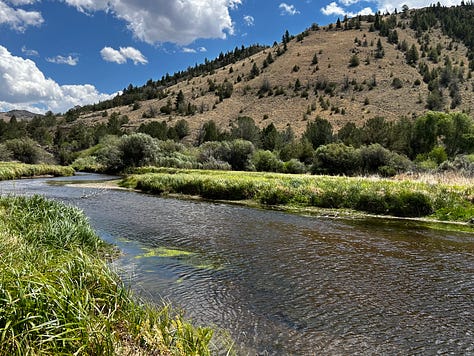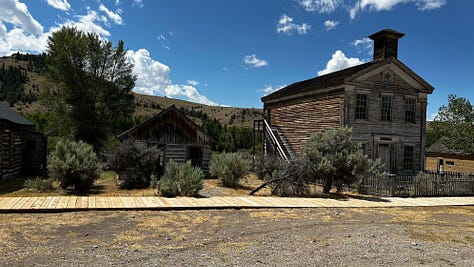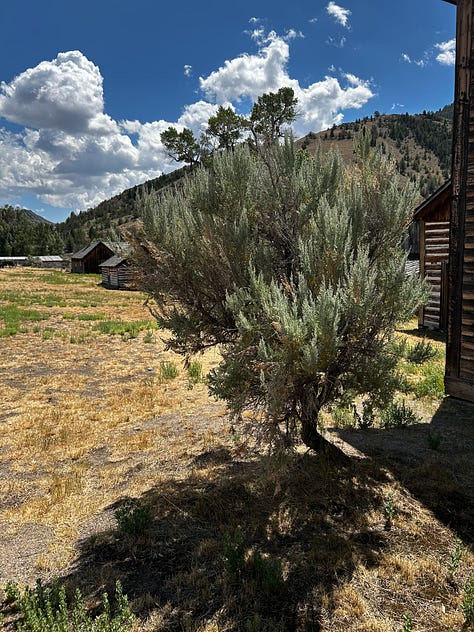The best tall tales land somewhere between belief and doubt. To the mind, they seem false. To the ear, they ring true. They stick with us because, however far-fetched they look on the page, they’re told with convincing flair.
To make you believe, the best tall-tale tellers often put their omniscient narrators in frame stories. The narrator, a colorful character, employs a manner of speech that makes you trust him, often conveying details so particular and reactions so relatable that you can’t but believe his story-within-the-story is true.
The confidence man who recently caught my ear tells Sir Arthur Conan Doyle’s “The American’s Tale” (1880). The very short work features a down-home American named Jefferson Adams. He’s in London entertaining a group of Brits with an “almighty queer” story. Like a very skilled conman—some magical stranger who belongs on stage with a hat and a missing rabbit—he begins by questioning his listeners’ sense of right and wrong.

“I haven’t no grudge against your men of science,” Jefferson says. “I likes and respects a chap as can match every beast and plant, from huckleberry to a grizzly, with a jaw-breakin’ name; but if you want real interestin’ facts, something a bit juicy, you go to your whalers and frontiersmen, and your scouts and your Hudson Bay men, chaps who can mostly scarce sign their names.”
By Jove, Good Jefferson, you do talk funny. Do tell us more!
Jefferson sets up and knocks down a story set in the American West, where feuding cowboys encounter justice in the form of a man-eating plant.
Somewhere in Arizona, Jefferson tells us, a belligerent American cowboy named Alabama Joe insulted a mannerly British one named Tom Scott. Guns were drawn, words were said, but no one was shot. The next day, however, Alabama Joe never returned home from a late-night walk home via an ill-reputed shortcut.
Alabama Joe “lived in an out-of-the-way sort of place, you see, clean off the trail, and had to pass through the Flytrap Gulch to get to it. This here gulch was a marshy, gloomy place, lonely enough during the day even; for it were always a creepy sort o’ thing to see the great eight- and ten-foot leaves snapping up if aught to touch them; but at night there were never a soul near.”
You can guess what happened: one of the great-great grandparents of Audrey II made a midnight snack of the American cowboy and the Brit got fingered for it. (Consult these illustrations from 1926 to see how it all went down.)
I’ll let “The American’s Tale” finish piling this steamer for you. Doyle does a marvelous job. If you’re drinking while you’re reading, you just might whiff some truth from it, like I did.
What makes the story so convincing?
Imagine reading this story 144 years earlier like Doyle’s contemporary readers. Would you have fallen for it? I might’ve. My frames of reference would have been limited to fantastic newspaper stories about the Wild West, where America, at least for those not pursuing manifest destiny, was being manufactured by words, some forming true accounts, and others … I mean, just maybe, right?
Jefferson Adams of “The American’s Tale” sure sounds like he gathered a tale or two from the West. As readers, we suspend disbelief for him because Doyle draws up a rich and convincing cowboy vernacular for him. To our ears, it sounds like Jefferson might know more about “almighty queer” things than we do.
“The American’s Tale” arrived at a moment when storytellers like Doyle could lead expeditions into the American West for western readers by simply spinning a good yarn. Unlike reporters or scientists beholden to facts, Doyle, a writer with a growing audience, could lend credence to silly things by artfully filling in the blanks of readers’ imaginations. What dangers really lurked in the American West beyond ugly things like war and genocide? Why, more harmless things like cockamamie bullshit and man-eating plants, of course.
Doyle, in the late nineteenth century, was writing at a time when science and observation weren’t fast enough to keep up with his storyteller’s imagination.
If you doubt that Doyle, the literary king of deduction, might have believed a plant could eat a cowboy, let’s not forget that Doyle absolutely believed in fairies – writing two articles and a book on them.
A few weeks ago, I ventured out West with my family. We pulled our sport-utility wagon into Bannack State Park, the site of Montana’s first gold rush.
The park rangers dished some pretty dark dirt on the settlers’ early days. Spoiler alert: there was A LOT of blood. Bannack’s surviving ghost town offers a rich history of avarice and lawlessness, where many a prospector “disappeared” while panning for prosperity.
Suspiciously, the rangers chalked up none of them murders to outlaw plants. Of course, that's what Big Park wants us to believe.
If you make the trip someday, mind you don’t get too close to the leafy fellas surrounding the perimeter. That sagebrush looked parched … and almighty thirsty.










Alex always provides interesting comentary and a unique perspective.